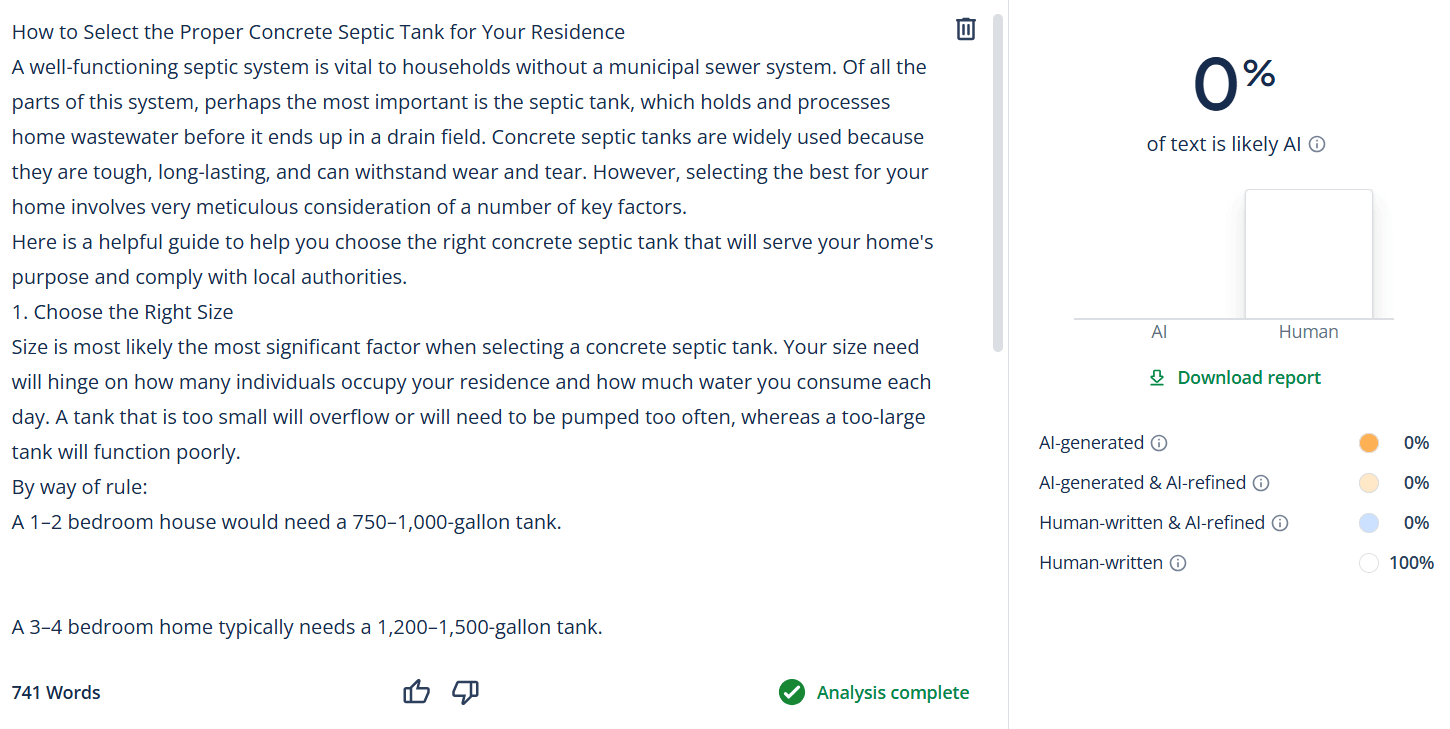A well-functioning septic system is vital to households without a municipal sewer system. Of all the parts of this system, perhaps the most important is the septic tank, which holds and processes home wastewater before it ends up in a drain field. Concrete septic tanks are widely used because they are tough, long-lasting, and can withstand wear and tear. However, selecting the best for your home involves very meticulous consideration of a number of key factors.
Here is a helpful guide to help you choose the right concrete septic tank that will serve your home’s purpose and comply with local authorities.
1. Choose the Right Size
Size is most likely the most significant factor when selecting a concrete septic tank. Your size needs will hinge on how many individuals occupy your residence and how much water you consume each day. A tank that is too small will overflow or will need to be pumped too often, whereas a too-large tank will function poorly.
By way of rule:
- A 1–2 bedroom house would need a 750–1,000-gallon tank
- A 3–4 bedroom home will generally require a 1,200–1,500-gallon tank.
- The 5-bedroom and larger homes may require a 2,000-gallon tank or larger.
Always consult with a licensed septic professional to determine the optimal tank size for your household and ensure it meets local health codes.
2. Consider Soil and Site Conditions
Soil conditions and soil type on your site will play a significant role in your septic system design and functionality. Before selecting a concrete septic tank, a soil percolation test (or “perc test”) should be conducted to determine how well the ground percolates.
Soil with clay, for instance, may drain slowly and need a larger drain field or even different system design. Your selection of tank should fit the limitations of your location but be efficient in wastewater treatment.
3. Provide Quality Construction
All concrete septic tanks are not alike. The tank itself must be high-quality reinforced concrete to withstand cracking and bearing pressure from soils around it. Search for tanks that go beyond or meet local and national standards, as set by the American Society for Testing and Materials (ASTM) or similar regulatory agencies.
Most important features to consider are: Steel rebar or mesh structural support for added strength, watertight design for leakage prevention, durable inlet and outlet fittings, and closed access risers or lids for inspection and maintenance.
A properly built tank minimizes the potential for expensive repairs and the longevity of your septic system.
4. Consider Accessibility and Maintenance
Regular upkeep is essential for maintaining your septic system in functioning order. Select a tank that has simple access points for inspection and pumping. Various concrete tanks have risers that position the access lid at ground level, taking the hassle out of digging up your lawn for every visit.
Make sure tank design is such that the outlet and inlet baffles can be easily accessed to prevent solids from entering the drain field.
5. Verify Permits and Local Regulations
Before septic tank installation, make sure to find out the local building codes and regulations of the health department. Tanks are sized, material is designated, depth of install, and watercourse distance are all controlled in most locations. Permits might be required, as well as inspection and approval of install.
Having a licensed septic installer perform the installation is one way to be certain of being in compliance with all regulations and laws.
6. Cost vs. Long-Term Value
Although concrete septic tanks are a more costly short-term investment than plastic or fiberglass, they are a better long-term investment. They are less vulnerable to root invasion from trees, extreme use, and soil load and will last 30–40 years or longer if maintained.
A little extra money spent on a hardy, long-lasting concrete tank will save you the hassle of replacing it earlier or having to make emergency repairs later on.
Select the Appropriate Concrete Septic Tank
Selecting the proper concrete septic tank is a crucial decision that influences the health, safety, and functioning of your home’s wastewater system. Considering your household size, soil type, tank condition, ease of maintenance access, and local law, you will be able to have confidence in the fact that your septic system will last for decades to come.
Always let a professional installer assist you with the process and permit you to make the optimum choice for your property.

Cassia Rowley is the mastermind behind advertising at The Bad Pod. She blends creativity with strategy to make sure ads on our site do more than just show up—they spark interest and make connections. Cassia turns simple ad placements into engaging experiences that mesh seamlessly with our content, truly capturing the attention of our audience.

